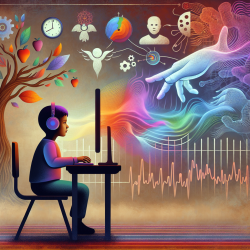The mental health of adolescents is a growing concern globally, with lifestyle behaviors playing a critical role in shaping their well-being. A recent study titled "Association between Lifestyle Behaviours and Mental Health of Adolescents: Evidence from the Canadian HBSC Surveys, 2002–2014" provides valuable insights into how physical activity (PA) and screen time (ST) are linked to psychosomatic complaints among adolescents. This blog post explores the key findings of the study and offers practical recommendations for practitioners seeking to improve adolescent mental health.
The Impact of Lifestyle Behaviors on Mental Health
The study analyzed data from four cycles of the Canadian Health Behaviour in School-aged Children (HBSC) surveys conducted between 2002 and 2014. It examined the associations of PA and ST with psychosomatic complaints in adolescents, revealing dose-dependent relationships. The findings indicated that higher levels of ST were positively associated with frequent psychosomatic complaints, while higher levels of PA were inversely associated with such complaints.
- Screen Time: The study found that excessive ST was linked to increased odds of reporting psychosomatic complaints. For boys, ST exceeding 6 hours per day showed a significant increase in complaints, while for girls, the threshold was 4 hours per day.
- Physical Activity: Engaging in at least 60 minutes of PA daily was associated with a reduction in psychosomatic complaints by 44% for girls and 57% for boys. This highlights the protective effect of regular physical activity on adolescent mental health.
Practical Recommendations for Practitioners
Practitioners can leverage these findings to enhance their strategies for supporting adolescent mental health:
- Encourage Physical Activity: Promote regular physical activity among adolescents by integrating it into daily routines. Schools can play a pivotal role by offering diverse sports programs and encouraging active transportation like walking or cycling to school.
- Limit Screen Time: Educate adolescents and their families about the potential negative impacts of excessive screen time. Encourage setting boundaries on daily screen use and promote alternative activities that do not involve screens.
- Create Supportive Environments: Foster environments at home and school that support healthy lifestyle choices. This includes providing access to safe outdoor spaces for physical activity and creating screen-free zones at home.
- Pursue Further Research: Encourage ongoing research to explore the causal pathways of these relationships and examine the impact of different types of screen use on mental health.
The study underscores the importance of addressing lifestyle behaviors as part of a comprehensive approach to improving adolescent mental health. By encouraging physical activity and managing screen time, practitioners can help mitigate psychosomatic complaints and promote overall well-being.










